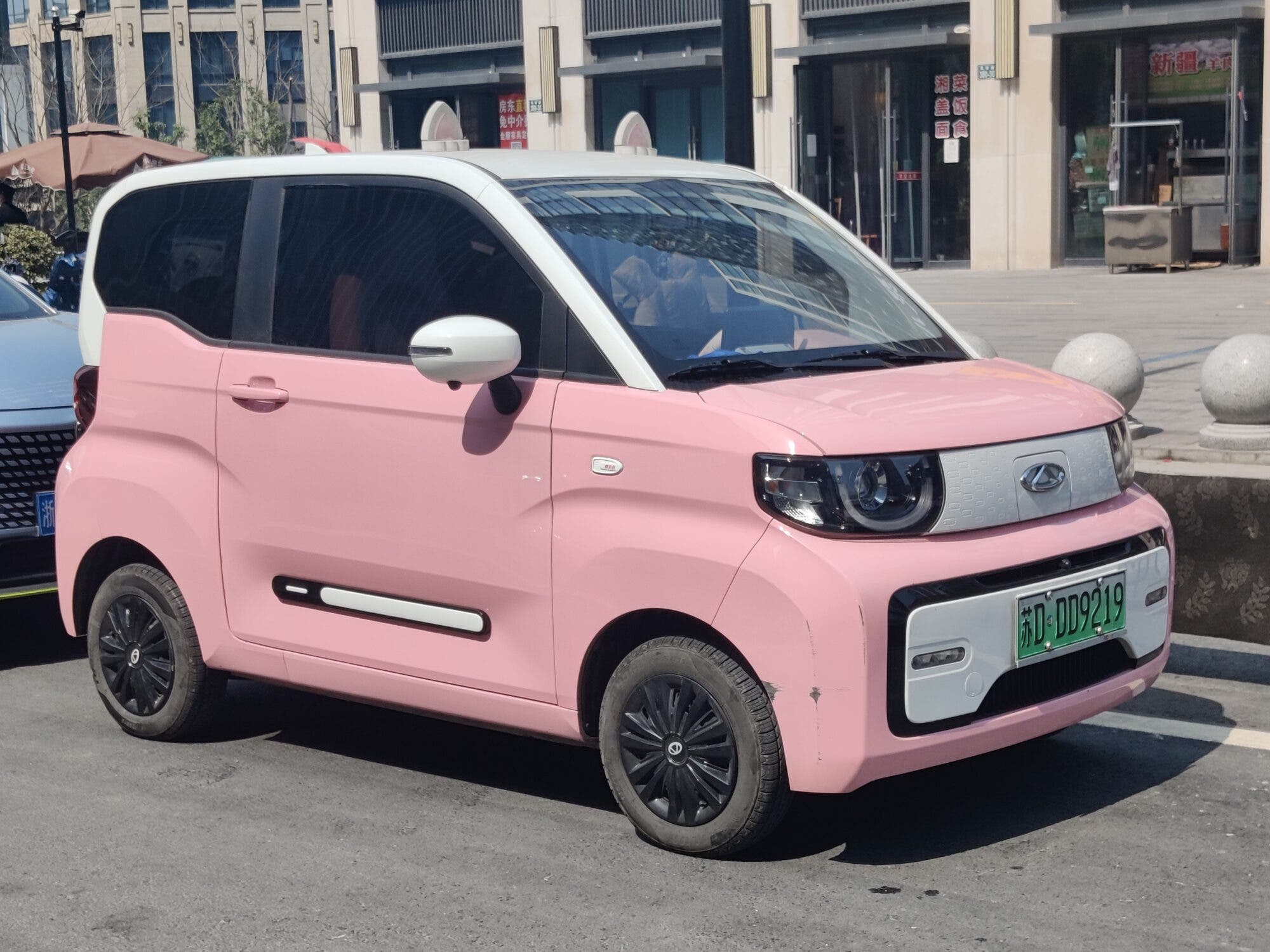The Ice Cream, A Small $5000 EV, May Spark More EV Interest In The Philippines
The Ice Cream, a popular small footprint electric vehicle in China, will be launched in Philippines very soon. The vehicle is available in three variants in China — hilariously called Pudding, Cone, and Sundae (you can guess which is the top variant) — for as little as $5,000. It is made by Chinese car maker Chery.

The vehicle will be introduced at the Manila International Auto Show (MIAS), the country’s version of the Los Angeles Auto Show, but more compact. It won’t be marketed as a Chery when launched, though. CleanTechnica sources at Chery Holdings confirmed that the car will arrive in the Philippines possibly without a badge and will be sold under Jetour, one of Chery’s many overseas brands, which has just just recently set up shop in the Philippines.
This white-labeled EV will still retain the Ice Cream name and will come in the most varied array of “delicious colors,” as one of our sources at Chery describes it.
And delicious is the word. The latest variant in China is called the Joyous Peach. The Ice Cream is also an experiment in marketing, as the parent company allows the local distributors to market it in various ways as long as they stick to the “fun” and “dynamic young” image that the car was molded in.
The Ice Cream has what Chery refers to as a “city range” which roughly defined is having enough juice to do daily city commutes running with conveniences like air conditioning and radio. A common car in Manila will do approximately 15 to 20 kilometers (9 to 12 miles) a day and idle in traffic between 30 mins to 1 hour in the normal hours, and twice that much time in the rush hour melee. The Ice Cream has two versions in China — one that can do 120 kilometers (74 miles) and another at 170 kilometers (105 miles) on a single charge.
 Chip in a few dollars a month to help support independent cleantech coverage that helps to accelerate the cleantech revolution!
Chip in a few dollars a month to help support independent cleantech coverage that helps to accelerate the cleantech revolution!
The Ice Cream was launched in China last December 2021, and has gone through development refinements for the export market. Chery did not declare and actually export the vehicle until July 2022, but also did not stop grey market importers from bringing it into several countries with no after-sales support.
Chery Motors Philippines, Inc. did not comment on these grey market imports coming into the Philippines, but one Chery dealer did say that they were not equipped with the tools, testing equipment, and skills to service the Ice Cream when it starts to “melt.” Meanwhile officials at Jetour, which operates separately from the Chery distributor in the country, also confirmed they will launch the car along side its ICE-engined SUVs at the MIAS.
Interestingly, the Wuling Hongguang Mini EV arrived first in the Philippines in late 2021. Side by side, it has almost the same shape and size as the Ice Cream. This is a common theme in China’s car designs and the reason is preference. Apparently the entry level Chinese car buyers — the ones who snap up these small EVs — are looking more for the practicality and not the looks.
The Ice Cream is propelled by a 27hp 20kw motor directly hooked into a solid axle transmission in the rear of the car. The floor-mounted lithium-ion battery pack is hooked up to the controller box, which is found in the front of the vehicle.
Under current policies, the Chery Ice Cream will find import duty exemptions which could drive the price down. Importations from China add on 30% import duties, but the Philippine Electric Vehicle Industry Development Act (EVIDA) got a recent boost when President Marcos, Jr. signed an order to remove tariffs on imported battery-electric vehicles. This means 0% duties on completely built-up EVs. The same order reduces rates on parts, and components will be reduced. The exemption applies to all electric vehicles for a five‑year period.
As a reference to the brand for readers in the US, Chery tried to enter the US market many times. In 2007, it inked a deal with Chrysler to bring in the Chery A1 and market it under both brands. That failed.
Then just before the pandemic, the company created the Vantas brand with vehicles designed to meet US specifications and fall into the 2.5% tariff bracket in 2010. However, souring relations with China, specially under the Trump administration, imposed an extra 25% on goods sourced from China.
The pandemic took a big toll on both the trade situation between the two countries. The Biden administration has kept the high tariff on goods from China and added the aspects of human rights concerns and security matters to holding back better trade relations with the country. Chery stopped its dreams of entering the US after HAAH Automotive Holdings, its supposed distributor, announced it would be filing for bankruptcy last July 2021.
Quick Specs Of The Chery Ice Cream (China edition)
- Classification: A00 (City car)
- Body style: 3-door hatchback
- Powertrain: 27 hp (20 kW) Chery TZ160XFDM13A electric motor
- Transmission: Single-speed automatic
- Battery: Lithium iron phosphate battery
- Drive Motor: direct-to-axle, rear wheel
- Transmission: None, drive and reverse controller
- Wheelbase 1,960 mm (77.2 in)
- Length 2,980 mm (117.3 in)
- Width 1,496 mm (58.9 in)
- Height 1,637 mm (64.4 in)

Featured image: Quzhouliulian, CC BY-SA 4.0 , via Wikimedia Commons
Have a tip for CleanTechnica? Want to advertise? Want to suggest a guest for our CleanTech Talk podcast? Contact us here.
Latest CleanTechnica.TV Video

CleanTechnica uses affiliate links. See our policy here.

